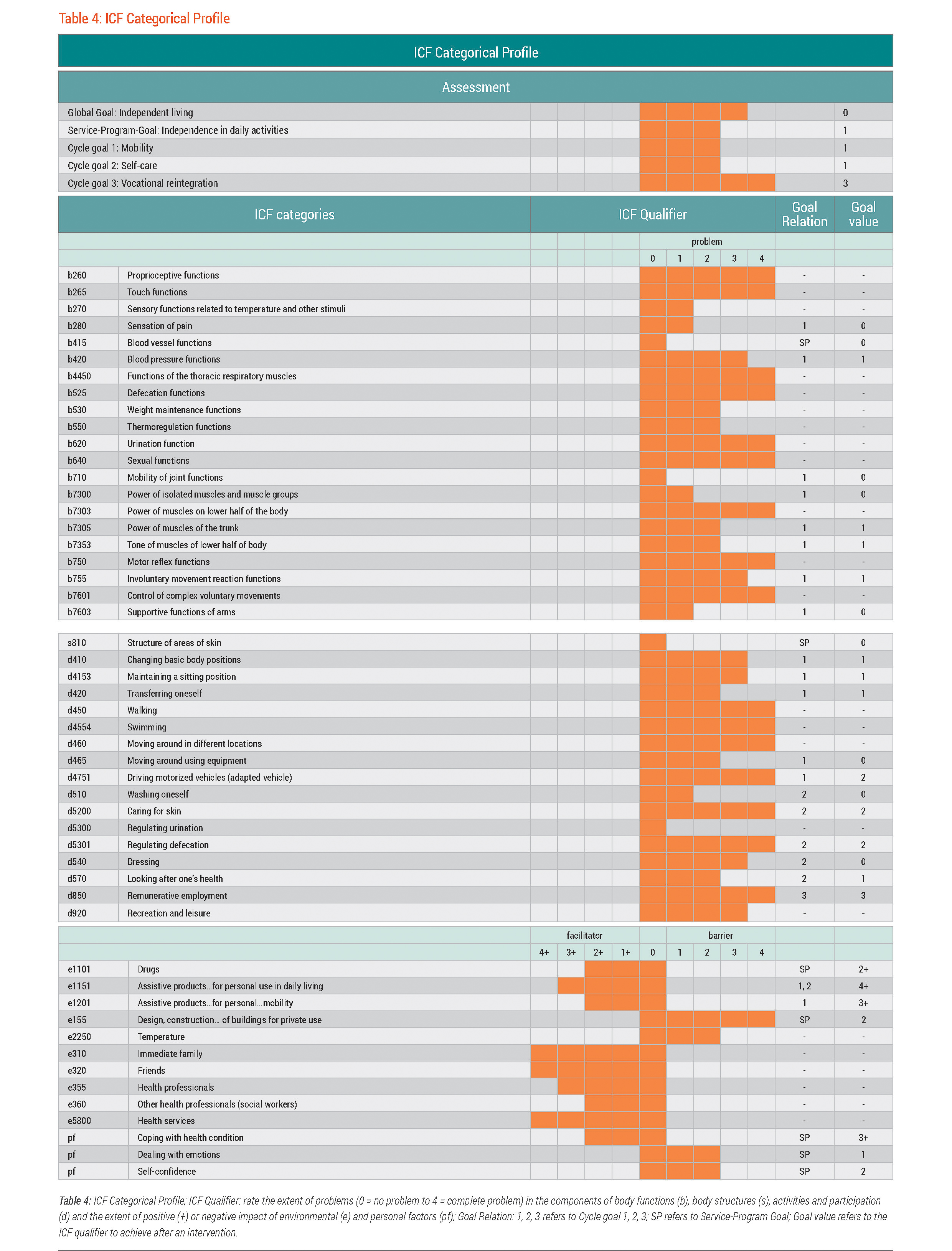Goal-setting/Determination of Intervention Targets
Setting Realistic and Desired Goals
These intervention targets and goals were documented on the ICF Categorical Profile. See table 4. Intervention targets are ICF categories that correspond to specific goals outlined in the ICF Categorical Profile and that are to be addressed with specific interventions. In Martin's case, examples of intervention targets include b7305 Power of muscles of the trunk, d465 Moving around using equipment and e1201 Assistive products and technology for personal indoor and outdoor mobility and transportation. These intervention targets corresponded to one of the specific goals that was set by Martin and his rehabilitation team i.e. improvement in mobility.
'Mobility' along with 'self-care' and 'vocational reintegration' were the three so-called cycle goals that were considered the most immediate goals to achieve. These specific cycle goals were the "stepping stones" toward achieving Martin's service-program goal of 'independence in daily living' and ultimately his global goal of 'independent living'.

Table 4: ICF Categorical Profile; ICF Qualifier: rate the extent of problems (0 = no problem to 4 = complete problem) in the components of body functions (b), body structures (s), activities and participation (d) and the extent of positive (+) or negative impact of environmental (e) and personal factors (pf); Goal Relation: 1, 2, 3 refers to Cycle goal 1, 2, 3; SP refers to Service-Program Goal; Goal value refers to the ICF qualifier to achieve after an intervention.
Clarification of Martin's Vocational Potential
Martin's global goal of being able to live independently also encompassed work participation. Consequently, cycle goal 3 on Martin's ICF Categorical Profile was defined as 'vocational reintegration'. This goal was set as a reflection of clear statements made by Martin that he intended to return to work as soon as possible. Martin believed that he could regain his autonomy when given enough time. In addition, Martin's rehabilitation team documented 'remunerative employment' on the ICF Assessment Sheet; this meant that the team felt that paid work was relevant for Martin's overall rehabilitation. Both Martin and his rehabilitation team considered the ultimate goal of returning to work to be realistic. Martin was not only engaged and enthusiastic, his rehabilitation team also felt that this would be within Martin's physical capacities after completion of rehabilitation.
The vocational rehabilitation (VR) counsellor who had been providing Martin with VR also contributed to the assessment. The activation phase of VR had begun a few weeks prior to and continued throughout the Rehab-Cycle® being reported in this case study. The activation phase of VR concluded with the final evaluation of Martin's functioning at the end of the Rehab-Cycle®. However, until then there was much work done to clarify Martin's vocational potential and optimise his functioning level through interventions.